Last updated: January 12, 2024
Article
The Oasis Newsletter: Fall 2023

This biannual newsletter of the Mojave Desert Network Inventory and Monitoring Program features: a web article co-authored by MOJN staff about nation-wide effort to conserve bats; highlights from our new web article – Monitoring Vital Signs in Times of Rapid Change; an article by recently departed intern Rily Bellias recounting her experience working on vegetation monitoring with us this summer; staffing changes; increasing information about science and inventory & monitoring on park web pages; and our fall and winter monitoring schedule.
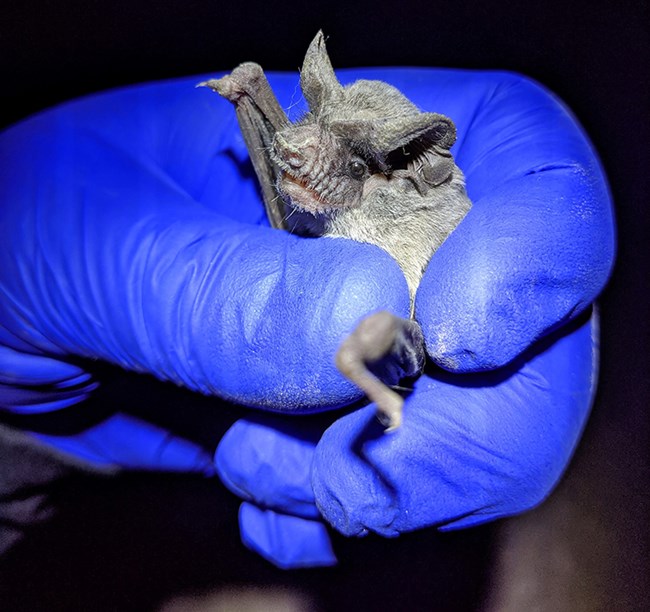
NPS
MOJN Staff Co-author Article in Park Science about White-nose Syndrome and Conserving Bats
MOJN Program Manager Allen Calvert and former MOJN Bat Monitoring project lead Kimber Godfrey, along with Bryan Hamilton (GRBA) and a number of NPS, USGS, and university partners, co-authored an article about the collaboration between the park service and partner agencies and organizations to combat white-nose syndrome and conserve bats. The fungus that causes white-nose syndrome first appeared in the U.S. in 2006 on the east coast and has since been detected in bats across the country. This disease poses series threats to the bat populations, causing dramtic declines in some species. As key pollinators, losing our bat populations has far reaching consequences for our forests, crops, and ecosystems. The park service, in collaboration with the many partners, is working to combat white-nose syndrome, conserve habitat, and increase awareness. Through this shared effort of over 150 partners, we have learned much about this poorly understood group of mammals, which gives us hope that we can take actions that will increase their chances of survival. The article was first published in the "Features" section of the summer edition of Park Science magazine and is available as a web article.
New Web Article: Monitoring Vital Signs in Times of Rapid Change

Joshua tree (Michael Burchett, NPS); Monitoring desert spring (Logan Combs, NPS); Flooded road in Death Valley (California Highway Patrol)
Environmental changes are occurring at increasing rates over the last century in the Mojave Desert. Examples include rising temperature, decreasing precipitation, and more frequent extreme events like wildfire and flooding. Check out this new web article to learn more about what we are monitoring in the Mojave Desert Network parks, some early changes we are seeing, and how what we are learning can be used to help managers plan for the future. We thank Jeri Stoller, Science Communication Intern with our regional Inventory & Montoring networks, who worked with us to write this article.
Interesting Observations from Summer Fieldwork at Great Basin National Park
Mountain Pine Beetles
Our vegetation crews documented mountain pine beetles in limber pines while conducting our white pine monitoring. These beetles were seen for the first time in one of our white pine plots and are something we monitor as they pose potential risk to vulnerable pine species already stressed by impacts of climate change. We have not yet seen them on the Great Basin bristlecone pines, which can grow in proximity to limber pines.
Dead Lake is revived, at least for now!

Jenn Bailard / NPS
One of the lakes we monitor in Great Basin had been completely dry at the end of the summer for the last two seasons we visited (2021 and 2022), but thanks to a substantial winter snowpack, the lake once again had water in it late this summer.
Staff Updates
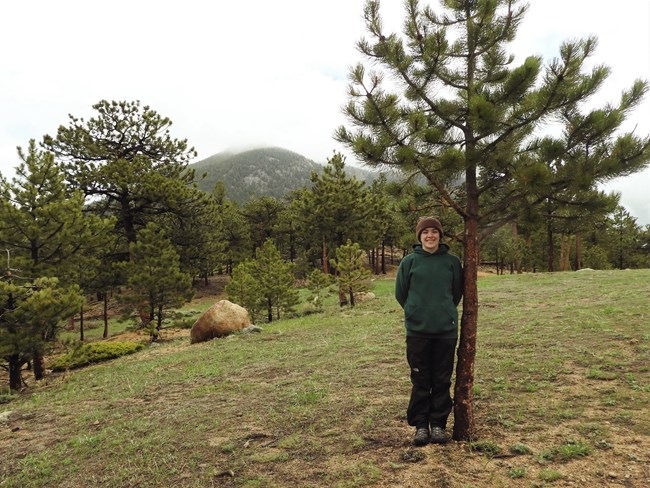
Welcome
Late this summer, Conservation Legacy intern Alison Gause completed her season as an ecological assistant for our vegetation projects, where she worked on Integrated Uplands Vegetation, White Pine, and Aspen. She has started a new season with us this October as an ecological assistant working on hydrology projects, including desert springs and selected large springs. Alison studied biology at the University of Connecticut with an emphasis in ecology. Previous work experiences include surveying tidal communities in the northeast US and terrestrial snails in Puerto Rican rainforests. We are delighted to have her on for another season – welcome back, Alison!
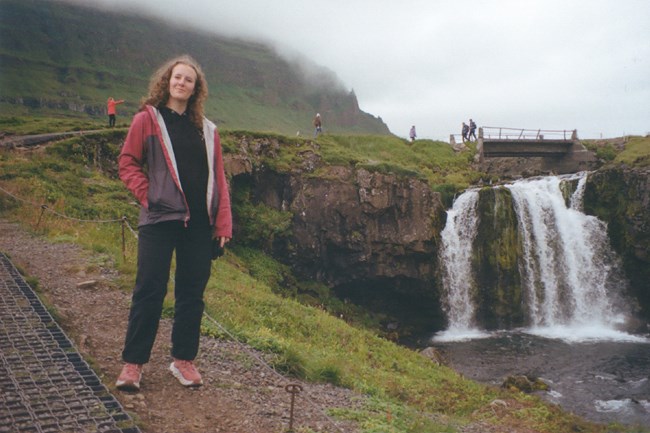
Irene Foster joined MOJN in early October as a Data Management Assistant. In this one-year Scientist in Parks position, she will be helping the data management team in supporting all our monitoring projects with tasks such as creating data dashboards and data visualization tools as well as contributing code to R packages. Irene got her BA in statistical and data sciences at Smith College. There, she was able to combine her passion for environmental science and being outside while doing research for a marine biology lab and working at a software engineering lab. While working for MOJN, she looks forward to exploring the parks and helping out with a little fieldwork too. We look forward to you sharing your expertise with us!
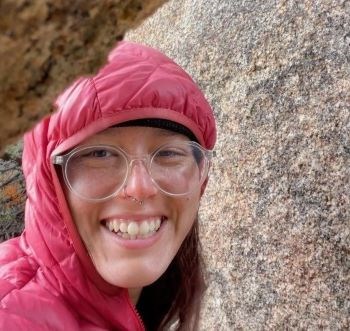
Avery Sigarroa also just joined MOJN in mid-October as a physical science technician through the Great Basin Institute. She will be working on our hydrology projects, including desert springs and selected large springs, for the next 6 months. Avery attended the University of Nevada at Reno where she got her BA in Wildlife Ecology & Conservation and in Environmental Science, stemming from her interest in animals and plants and how they interact with each other and their environment. Her varied fieldwork background includes wildlife capturing/monitoring, soils, botany, seed collection, and restoration – a great suite of skills to bring to MOJN! Her longer term aspiration is to do research in the Pacific northwest.
Farewell

In August, we said goodbye to MOJN lead Physical Science Technician Marisa Monroe, who was accepted to the Ecology & Environmental Science master's program, within the Wildlife, Fisheries, and Conservation Biology Department at the University of Maine. She will be studying aquatic ecology and will be working with Acadia National Park and community scientists to map amphibian road crossings throughout the park from early-spring through late-fall. The team hopes to develop a model which predicts the probability of amphibian road-crossings using weather data, location, and time of year. These data will be used to help the park mitigate road mortality of amphibians, especially in upcoming road projects. Marisa started with MOJN in 2019 and was a key member of the hydrology team, initially as a field technician and later as the lead field technician. We will miss her and wish her well in her new life path. Thank you, Marisa, for your years of hard work with all things aquatic in MOJN!

We also say farewell to our Great Basin Institute vegetation technician, Sabina Milbauer, and our Conservation Legacy interns, Molly Bahr and Katelyn Heinsma. Sabina helped with implementing the vegetation projects, including spring vegetation, integrated uplands vegetation, white pine, and aspen. Both Molly and Katelyn assisted with the bats project (white-nose disease surveillance and acoustic monitoring) as well as some of our vegetation projects. Thank you for all your hard work here at MOJN, and we wish you more great opportunities in your futures!
Ecological Assistant Rily Bellias Shares Internship Highlights
Rily Bellias joined MOJN in May as an ecological assistant through Conservation Legacy and helped us with our vegetation monitoring projects. She came to MOJN having recently worked on sagebrush community monitoring in Montana and was excited to be doing similar work in our network parks. She shared some thoughts about her experience:
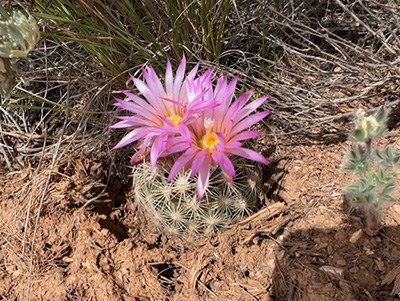
Rily Bellias
During my six-month position with the Mojave Desert Inventory and Monitoring Network, I worked on several vegetation monitoring projects including Integrated Uplands in sagebrush communities, Five-Needle Pine, and Aspen. Through this, I have been able to put my existing skills into action in addition to gaining a plethora of new skills. Some of these include learning new tools for vegetation monitoring, learning tree sampling protocols, and expanding my ArcGIS Pro skillset.
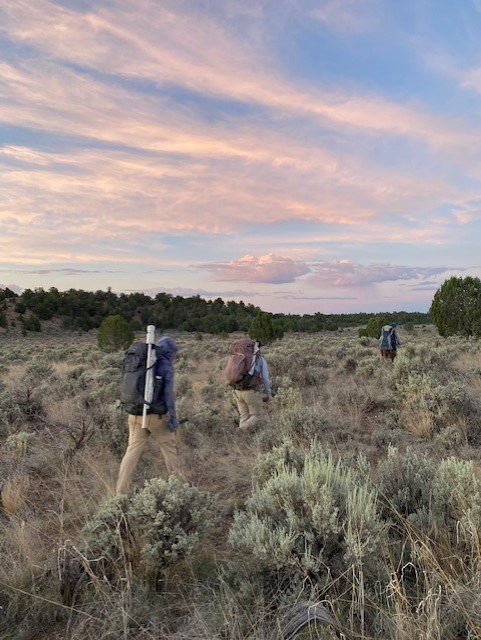
Rily Bellias
My favorite project was Integrated Uplands Vegetation monitoring in the Grand Canyon-Parashant National Monument. I enjoyed learning more about the effects of climate change and ranching on sagebrush communities in the western United States. Some of my favorite memories include sitting in the little shade provided by junipers to use a dichotomous key to identify plant species from our plots. The desert can be harsh, but during May and early June, native wildflowers decorated the desert with color giving the area a welcoming appearance. In addition to enjoying the unique forbs, I found the geologic features to be quite exquisite. seeing the various rock formations, colors, and structures is something I will cherish forever.
Aspen and white pine monitoring later in the summer brought different challenges and experiences. Initially, doing the tree protocols was a little out of my comfort zone, as I had no prior experience. Despite my apprehension, the Aspen monitoring became particularly rewarding to complete. My crew had minor logistic and weather setbacks that led us to initially abandon the aspen plots located on the western half of Great Basin National Park. Besides valuable time lost because of the impacts of Hurricane Hilary, a major limiting factor was the distance to these plots and the varied terrain. The amount of hiking to get to and from aspen and pine plots was typically 3 to 9 miles a day. These hikes can be difficult with heavy packs filled with gear, the weather almost always has a chance of thunderstorms, and the terrain is often steep and gravelly or densely vegetated. While getting all the plots finished was hard work and led to some long days, it was rewarding to accomplish this difficult task.
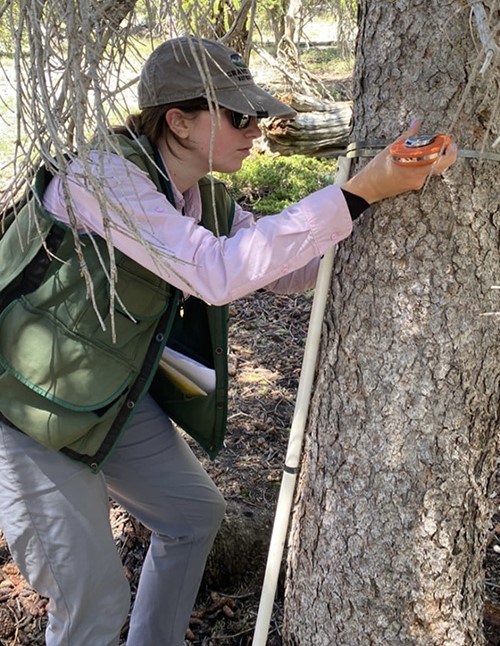
Photo by Molly Bahr, Conservation Legacy
The part I enjoyed the most was spending time hiking and camping in the backcountry with my amazing crew members. Something special about camping, specifically in Great Basin, was getting to experience the night sky. Before experiencing the incredible dark sky, I didn’t comprehend how many stars, satellites, and planets are visible from Earth. Now, I know there is so much more out there. This was even more special because crew lead Joe Ladd pointed out constellations and galaxies that I did not even know existed. Working and camping in the backcountry is a special experience. Not only is it fun to roam off-trail to get to plots and explore places not many get to explore, but it introduced me to different ecosystems and geology I would not have experienced otherwise.
Everyone I met at MOJN is genuinely thoughtful, enthusiastic, and deeply invested in the work they do. Their attitudes and work ethic always made the work environment a comfortable, safe, and a fun place to be. I hope to find this type of community in the future as I pursue graduate school or a full-time position in an ecology-related field. I look forward to using what I have learned at MOJN in my new position with Joshua Tree National Park as a Scientist in Parks Biology Assistant."
Thank you Rily for sharing your story about working with us and for being part of our team here at MOJN! We wish you well in your new position at Joshua Tree!
Fall and Winter Field Schedule
| Park | October | November | December | January | February | March |
| DEVA | – | Desert Springs | – | Bats1, Desert Springs, | Bats1, Desert Springs | Bats2 |
| GRBA | – | – | – | – | Bats1 | – |
| JOTR | – | – | Desert Springs, Selected Large Springs | Bats1, Desert Springs | – | Selected Large Springs |
| LAKE | Desert Springs | – | Selected Large Springs | Bats1, Selected Large Springs | Bats1 | Bats2, Integrated Uplands, Selected Large Springs |
| MANZ | – | – | – | – | – | – |
| MOJA | – | – | Selected Large Springs | Bats1 | Desert Springs | Selected Large Springs |
| PARA | Selected Large Springs | – | Selected Large Springs | Bats1 | Bats1 | Desert Springs, Selected Large Springs |
2Capture
Assisting MOJN Parks with Science and Research Content on Their Websites
Our communications staff reached out to the web managers at Joshua Tree, Death Valley, and Great Basin National Parks to provide some help adding pages to their websites that feature science and research happening in their parks, including MOJN Inventory and Monitoring efforts. These three parks now have enhanced science content on their sites, including links to our monitoring project webpages! Visit the new Inventory and Monitoring pages for Death Valley and Joshua Tree, as well as the new Science and Research page for Great Basin (which also has a llnk to their new Inventory and Monitoring page) to see the results. We see these as win-win collaborations, with parks getting new science content on their pages and MOJN gaining increased visibility. We are currently also working with Lake Mead National Recreation Area and plan to reach out to other MOJN parks this coming year.
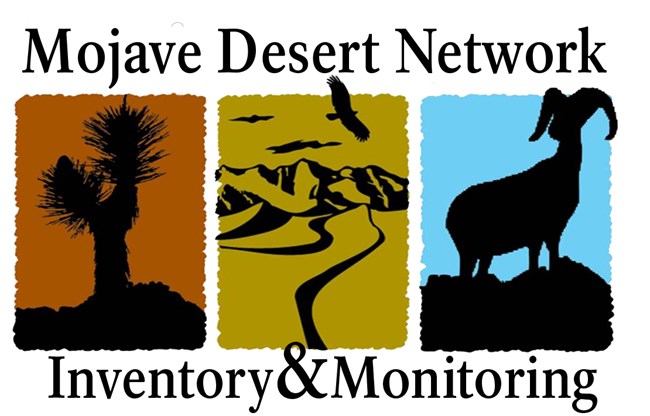
NPS Mojave Desert Inventory & Monitoring Network
601 Nevada Highway
Boulder City, Nevada 89005
